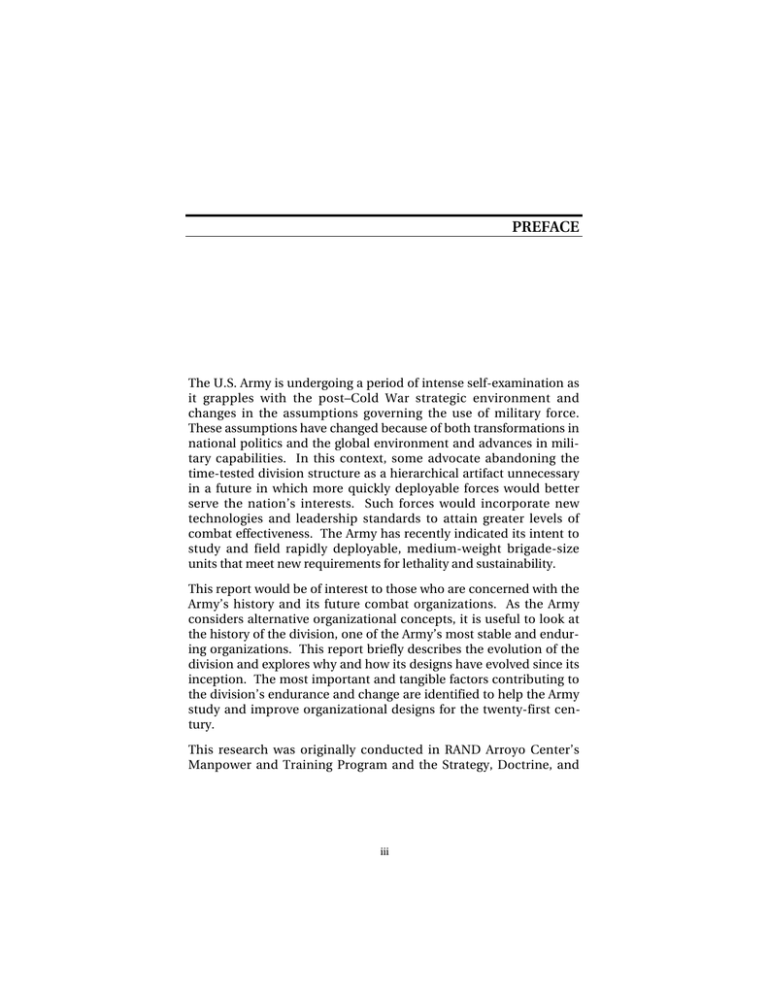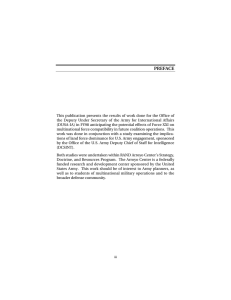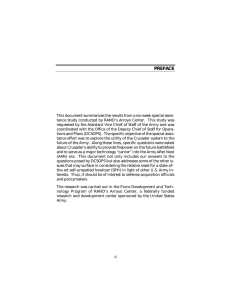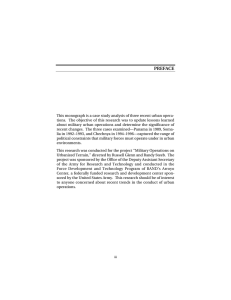PREFACE
advertisement

PREFACE The U.S. Army is undergoing a period of intense self-examination as it grapples with the post–Cold War strategic environment and changes in the assumptions governing the use of military force. These assumptions have changed because of both transformations in national politics and the global environment and advances in military capabilities. In this context, some advocate abandoning the time-tested division structure as a hierarchical artifact unnecessary in a future in which more quickly deployable forces would better serve the nation’s interests. Such forces would incorporate new technologies and leadership standards to attain greater levels of combat effectiveness. The Army has recently indicated its intent to study and field rapidly deployable, medium-weight brigade-size units that meet new requirements for lethality and sustainability. This report would be of interest to those who are concerned with the Army’s history and its future combat organizations. As the Army considers alternative organizational concepts, it is useful to look at the history of the division, one of the Army’s most stable and enduring organizations. This report briefly describes the evolution of the division and explores why and how its designs have evolved since its inception. The most important and tangible factors contributing to the division’s endurance and change are identified to help the Army study and improve organizational designs for the twenty-first century. This research was originally conducted in RAND Arroyo Center’s Manpower and Training Program and the Strategy, Doctrine, and iii iv The U.S. Army Division in the Twentieth Century Resources Program. The Arroyo Center is a federally funded research and development center sponsored by the United States Army.



